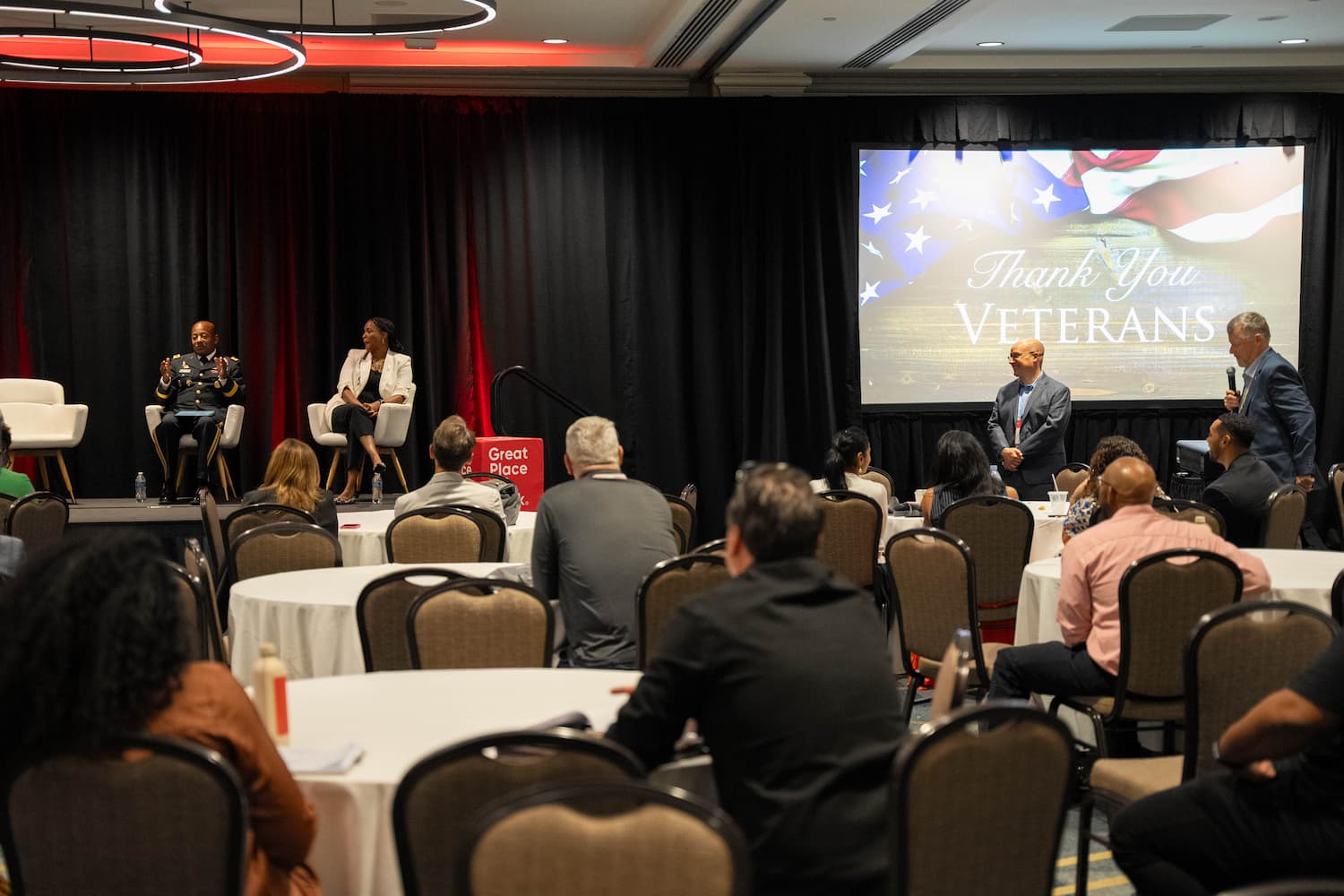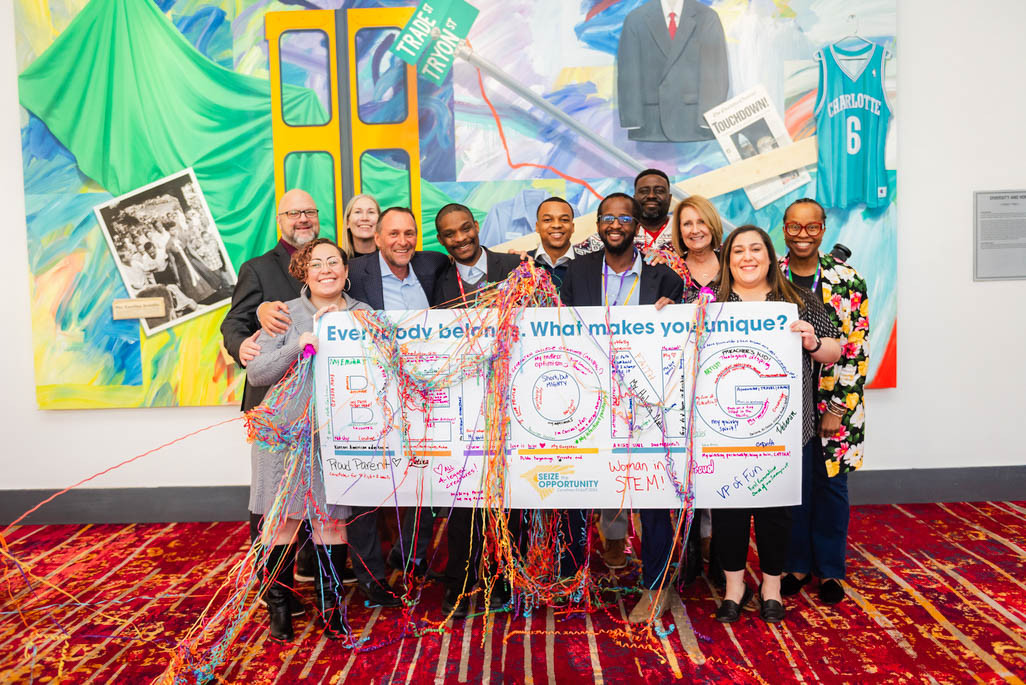The best workplaces enable employees to solve key business problems by unleashing their creativity and listening to their voices.
"Not every suggestion I've made over the years has been implemented - but I've always felt like I was heard and I've always felt like I was empowered to share the feedback. Heck, my current position and the one before that are jobs that I basically created because I saw an essential issue that needed to be addressed. Both times, a department has grown up out of it and is still in operation." - Employee at SAS Institute from The Great Workplace by Jennifer Robin and Michael Burchell
Your employees wake up each day, even Monday mornings, and they want to be challenged and stretched.
Your business has significant business challenges that need to be solved.
How do you help tap the ingenuity of your people and respond to their need to be included?
We've noticed that Best Workplaces do two things very well:
- They know how to ask their employees for input and use the information to improve the business, and;
- They enable their employees to solve key business problems by unleashing their creativity and listening to their voices.
Our 2016 Great Place To Work Conference Collaboration Track showcases how Best Workplaces find meaningful ways to join forces with employees...and transform their businesses in the process. They've cracked the code on incorporating employee's ideas and take collaboration to the next level by asking for feedback, weaving that feedback into the fabric of the organization, and closing the communication loop.
Employees LOVE that kind of stuff.
Use It or Lose It
There one guaranteed way to lose employee's trust: ask them for feedback, then ignore it completely. Or if you do actually use any of it, never let them know how their input shaped your decision-making. Oh, and don't say "thank you".
Best Workplaces like Atlassian, Hyland, and VMware—all presenters in our conference Collaboration Track—genuinely believe that employee feedback is a lifeblood of their business and use feedback strategically. At software maker Hyland, leaders believe in the power of feedback and they go out of their way to solicit and incorporate that feedback, using a combination of retention and exit interviews, Trust Index© surveys and other KPIs to create a better experience for employees. They understand the impact of feedback on the employee experience and on the business.
At SAS Institute, employee ideas are critical to their success and the software company uses feedback to empower staffers, especially millennials. SAS quickly learned that millennials don't want different things – they just want it NOW! When employees know that you're listening and that you value their input, they'll tell you the truth. By finding ways to meaningfully collaborate with employees, you'll help unlock their talents and everyone shares in the success.
And it's okay to let employees know how their input shapes your decision-making. Employees are generous enough with their trust to accept that all input isn't going to be used, but they appreciate knowing how you arrived there.
Let Your Employees Help Solve Your Toughest Problems
What keeps you up at night? Out of stock suppliers? Crucial emails being stuck in your outbox?
If there's anyone else in the world who cares about your work issues as much as you do, it's your employees. They find answers to problems in the shower, while out walking their dogs, and over glasses of good wine. The question is how can you tap into their collective wisdom?
Many best companies use social media to drive innovation and collaboration. They use tools like slack, Chatter, and Facebook for Work to encourage employees to share their insights on crucial business issues. Social collaboration tools allow you ask questions of the entire organization, not just a manager or a single co-worker.
And best companies don't just push information out. In the case of SAS, social is used to get real-time feedback on real-time challenges. The company leverages that information, and those relationships, to get down to business. Their employees sincerely appreciate the direct access they have to top executives, like CEO Jim Goodnight. This builds an incredible amount of trust.
To create a "great place to work for all", companies need to encourage diversity of thought, perspectives, ethnicities and genders. VMware found a structured way to include more womens voices to the chorus of leadership that impact the business every day through VMwomen, a "business-led initiative with clear goals and accountability."
This isn't soft stuff. Programs like these create value across the business by being extremely clear about their metrics and setting meaningful goals. The structure provided the blueprint for VMinclusion, a diversity and inclusion program that builds on the operating model of VMwomen—allowing it to scale more quickly in the organization.
So there's no excuse to hole yourself up behind that big oak desk and sweat it out alone. Invite your employees in as thought partners - they'll be happy you did and you MIGHT get some REAL work done.
Conclusion
You have to ask, listen, and respond. Every company does it differently, but the common thread is trust: best workplaces BELIEVE that their success rests in the heads, hearts, and hands of their employees and their actions show it.
Bottom line: Use feedback to your advantage.
And did I mention it's free? Now that's good for your bottom line.
Julian Lute is a consultant at Great Place To Work®







